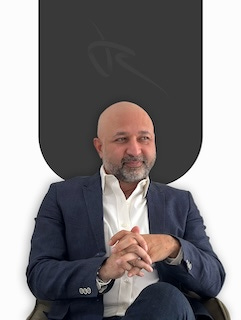Solution Architect vs Solution Designer: Who Does What?
Understanding the line between strategy and implementation in modern solution delivery.
In many organisations, the lines between roles in the technology space can blur—especially when it comes to solution architects and solution designers. I’ve often seen teams unsure about where one role ends and the other begins. On the surface, both contribute to building solutions. But the reality is, they work at different levels of focus, with distinct responsibilities and mindsets.
As an enterprise architect, I view the solution architect as someone who defines the direction—the architectural blueprint that aligns technology with the organisation’s strategic goals. The solution designer, meanwhile, brings that vision to life. They deal with the finer details, translating the architectural blueprint into practical, implementable components.
Understanding the difference isn’t just helpful—it’s necessary. When these roles are clearly defined and working in sync, the outcome is a solution that’s well-aligned, scalable, and efficient. When the distinction is unclear, teams risk overlap, miscommunication, or worse—gaps in delivery.
In this article, I’ll walk through the core differences between these roles, where they intersect, and how they complement each other throughout the solution development process.
What Makes the Roles Different?
Strategy vs Execution
At a glance, the titles “solution architect” and “solution designer” can sound interchangeable. Both are involved in creating and delivering technology solutions. But the core difference lies in their level of focus.
A solution architect works at a strategic level. They shape the direction of a solution before it’s built. Their role starts by understanding the business problem, then defining a solution structure that aligns with business goals, technical capabilities, and organisational standards. They focus on the big picture—how systems connect, how data flows across platforms, and how the solution fits into the wider enterprise architecture.
On the other hand, a solution designer works much closer to the technical build. While the architect defines the structure, the designer figures out the exact bricks. They make decisions around component-level design, module interfaces, data modelling, and technology choices that will meet the performance, security, and integration needs of the system.
In simple terms, if the architect sets the blueprint for the house, the designer chooses the materials, the wiring plan, and how each room will function. Both are essential—just working at different stages of the delivery process.
The Role of a Solution Architect
Responsibilities
A solution architect plays a key part in bridging the gap between business goals and technology. Their work often begins well before any code is written. They engage with stakeholders to understand what the business is trying to achieve and translate that into a high-level design that guides development teams. This involves selecting appropriate platforms, defining integration points, and outlining how different systems will work together.
They also take ownership of architectural decisions that impact scale, performance, security, and maintainability. A good solution architect ensures that the proposed solution doesn’t just work in isolation, but fits into the broader enterprise context. That means thinking about long-term support, operational handover, and alignment with architectural standards already in place.
In most projects, the solution architect becomes a key voice during the early planning stages and often remains involved throughout delivery to ensure the design is being followed correctly and adapted when needed.
Core Skills
To succeed in this role, a solution architect needs more than technical knowledge. Yes, they need to understand platforms, cloud architecture, APIs, data flows, and infrastructure—but that’s just the baseline.
They also need to be excellent communicators. Much of their time is spent working across teams—business, delivery, security, infrastructure—and being able to translate technical detail into business terms (and vice versa) is essential.
Strong problem-solving skills and the ability to weigh trade-offs are also critical. Every project has constraints, whether in budget, legacy systems, or organisational culture. A good solution architect can work within those constraints while still delivering an approach that holds up over time.
The Role of a Solution Designer
Responsibilities
A solution designer takes the vision defined by the architect and brings it closer to execution. While the architect focuses on structure and alignment, the designer zooms in on the detail—how individual components are built, how services will interact, and what tools and patterns are used during development.
They work closely with developers, testers, and infrastructure teams to turn high-level architecture into concrete implementation steps. This can involve designing APIs, defining database structures, choosing frameworks, and ensuring technical standards are followed across the solution. They’re also responsible for documenting the design in a way that’s clear and usable by delivery teams.
During development, the solution designer often plays a key support role, answering questions, refining specs, and making quick decisions that ensure the build stays true to the original vision—while still being practical for delivery.
Core Skills
Solution designers need strong hands-on technical knowledge. They often have a background in development and understand how solutions are built at code level. This helps them make decisions that are both technically sound and feasible within delivery constraints.
They must be able to interpret the architectural blueprint and break it down into implementable parts. Attention to detail is critical—they’re responsible for ensuring that the solution meets performance goals, handles edge cases, and aligns with security and operational requirements.
Communication also matters. Designers are often the main point of contact for developers and need to be clear, consistent, and collaborative in their approach. While their work is less focused on long-term strategy, it plays a big role in short-term success.
How These Roles Collaborate
When the solution architect and solution designer work together well, delivery becomes smoother, faster, and more aligned with business needs. The architect sets the direction by defining the overall structure and guiding principles. The designer takes that direction and turns it into something teams can build.
This relationship relies on ongoing communication. Architects need to stay close enough to the delivery process to ensure the design intent isn’t lost. Designers, on the other hand, bring valuable feedback from the development side—highlighting where the proposed architecture might need adjustment to meet technical constraints or timelines.
In many projects, architects and designers are in constant contact throughout the lifecycle. Early on, they might co-create design sessions or whiteboard key flows. As delivery progresses, the designer will often consult with the architect to confirm that certain decisions still align with the broader goals.
When there’s a gap between the two roles, teams feel it. Designs may drift from the original strategy, or the architecture may become too abstract to implement effectively. But when they’re aligned, architecture stays practical, and the build stays on course.
When You Need One vs Both
Every project has its own scale and complexity, and not all of them require both a solution architect and a solution designer. Sometimes, especially in smaller teams or short-term projects, one experienced person can cover both roles. But as the scope grows, separating the responsibilities becomes more effective.
If you’re working on a large program with multiple systems, integration points, or dependencies, you’ll benefit from having both roles. The architect focuses on making sure everything fits together across platforms and aligns with enterprise standards, while the designer ensures the technical design is sound, complete, and ready for delivery.
In contrast, for smaller, self-contained projects—especially those with minimal integration—you may only need a designer to work directly with developers. They can take high-level business requirements and shape a detailed solution without needing a full architectural blueprint.
Choosing whether you need one or both comes down to scale, risk, and how strategic the work is. If the project affects long-term technology direction or touches multiple systems, you’ll need an architect. If it’s more about detail and delivery, the designer may be enough. On critical projects, both roles bring balance—strategy and detail working together to get the job done right.
Conclusion
Clear role definitions make a real difference in how technology solutions are shaped and delivered. The solution architect brings strategic direction, making sure the design supports broader business goals and fits well with existing systems. The solution designer brings depth, translating that direction into detailed technical plans that delivery teams can act on.
Both roles require strong collaboration and ongoing communication. When they work well together, the outcome is more consistent, more scalable, and easier to maintain. When the roles are blurred or misunderstood, gaps start to show—either in strategy, delivery, or both.
For organisations aiming to reduce rework, avoid misalignment, and improve delivery quality, understanding where these roles fit is a smart first step. If you’re planning your next major solution, take a moment to ask: do you have the right blend of strategic oversight and design depth? The answer could shape your project’s success.
For those looking to deepen their expertise in enterprise architecture and elevate their projects through strategic communication, I invite you to connect with me. As an experienced Enterprise Architect and AI consultant, I offer tailored guidance and insights that can transform your architectural practices. Visit my social media profiles to learn more about my services and how I can help you achieve excellence in your architectural endeavours. Let’s build robust, effective solutions together and drive success in your next project. X(twitter), Instagram.
For more articles on ethical AI, Architecture, leadership strategies, and staying technically relevant, follow me on LinkedIn or subscribe to my blog for regular updates.



